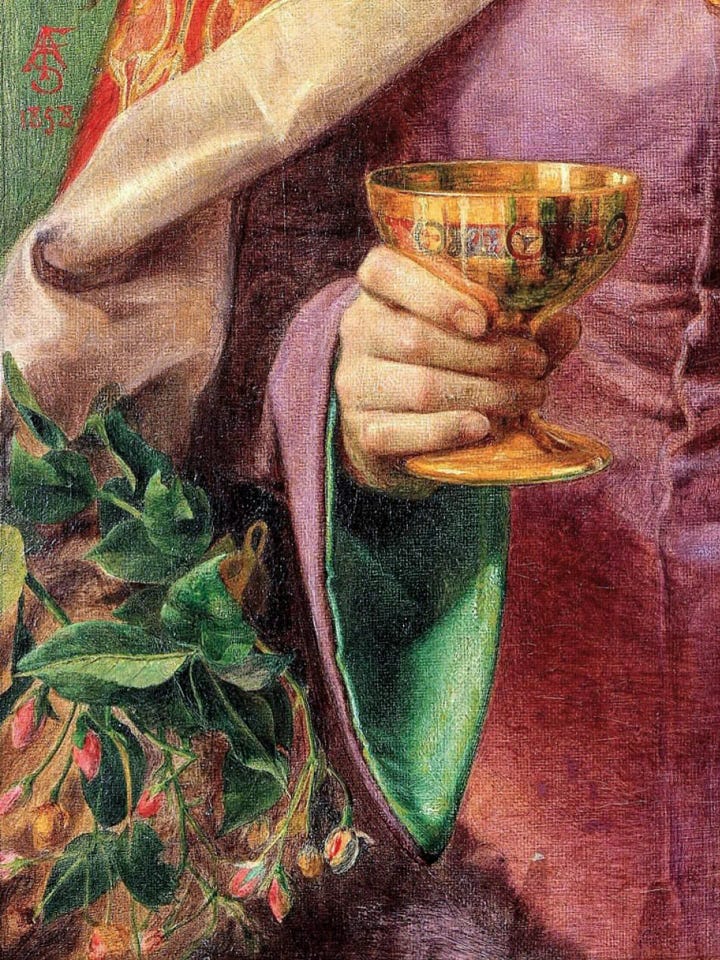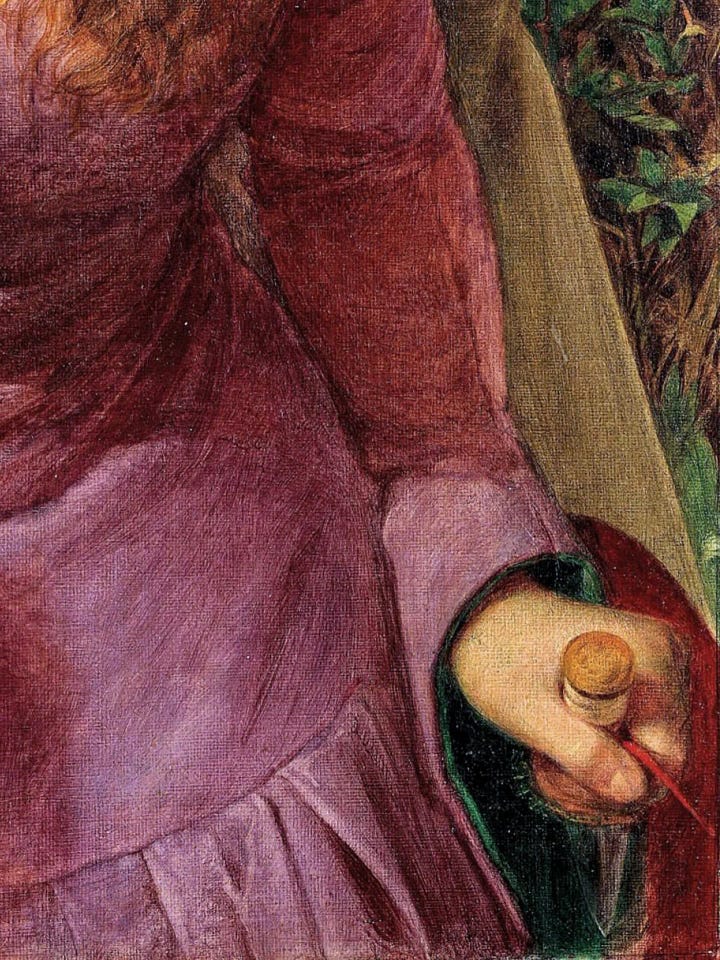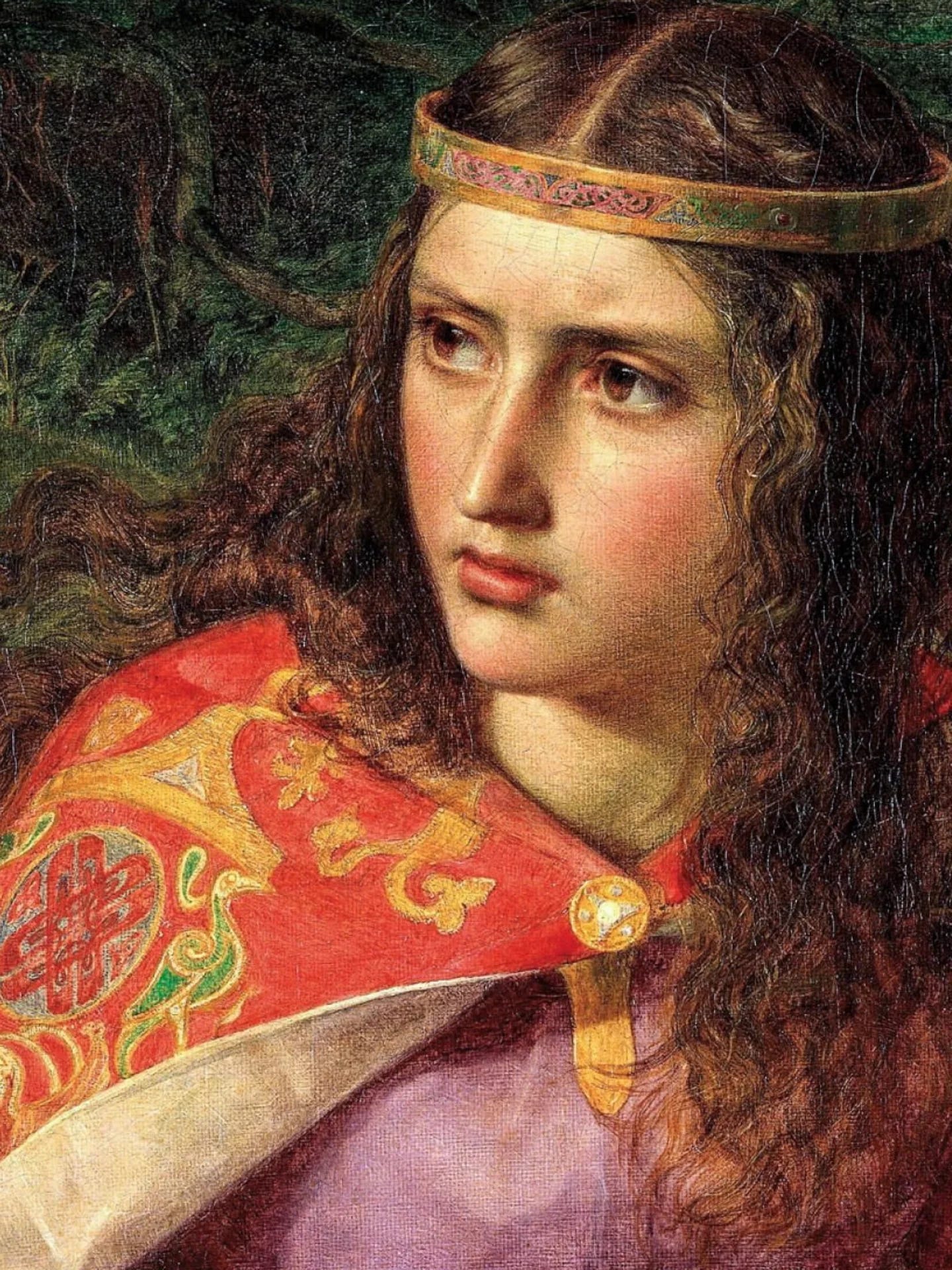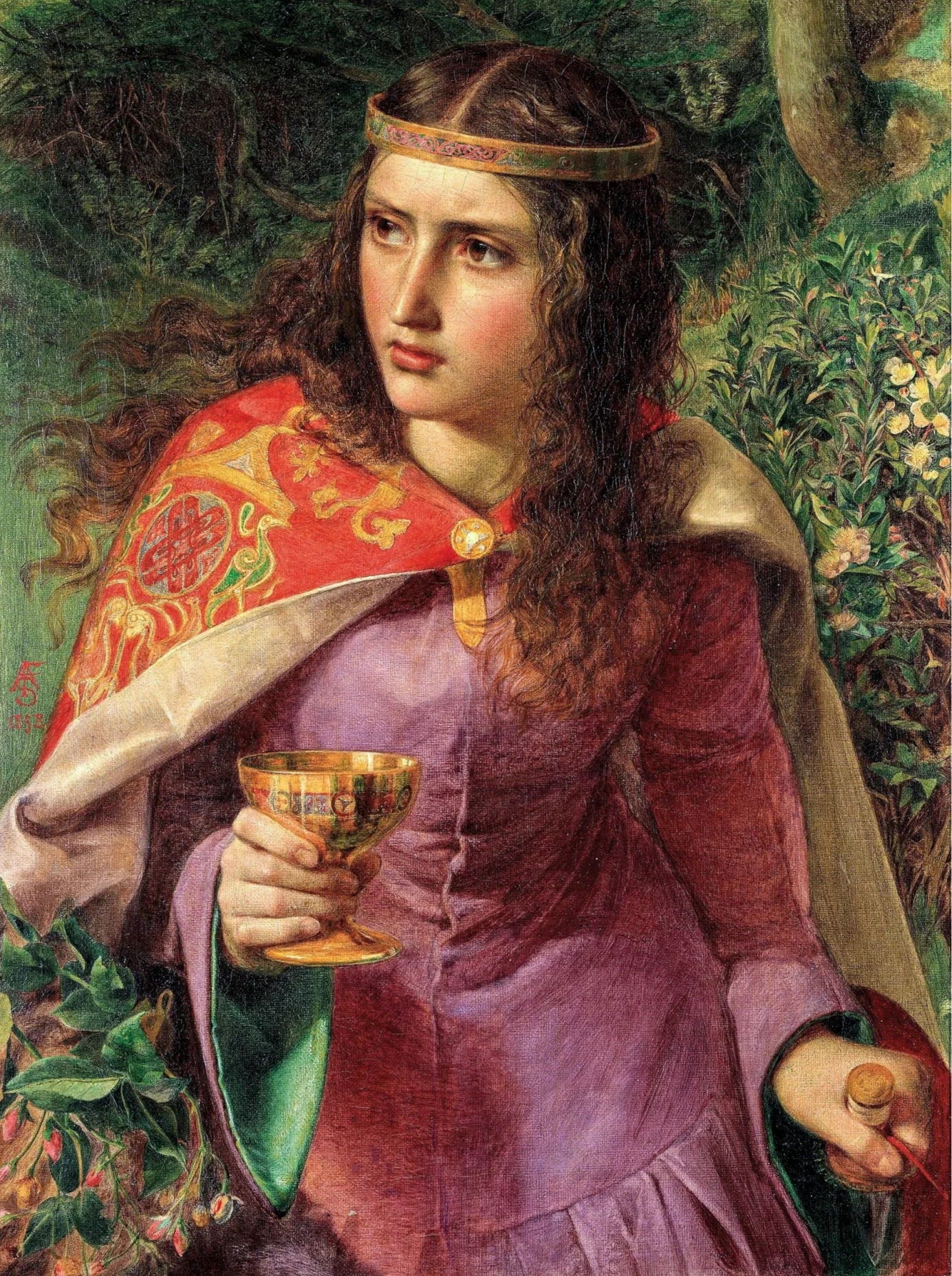Poison or Dagger: Eleanor’s Choice
Queen Eleanor By Frederick Sandys
Queen Eleanor, an 1858 oil-on-canvas painting by Frederick Sandys, is a captivating piece that masterfully weaves together history, literature, and art. This painting offers a glimpse into the tumultuous world of medieval royalty, particularly the legendary tale of Queen Eleanor of Aquitaine and her husband's mistress, Rosamund Clifford.
The painting depicts Queen Eleanor, wife of King Henry II of England, as she navigates a labyrinth, trailing a red cord behind her. According to legend, Queen Eleanor used this cord to find her way to Rosamund's bower, where she would confront her husband's mistress.
The Queen's intentions were far from peaceful. She offered Rosamund a choice between a bowl of poison and a dagger, which ultimately led to Rosamund's demise.


Composition and Symbolism
In Sandys' portrayal, Queen Eleanor exudes a sense of determination and menace. She's dressed in a mauve medieval-style gown with a red cloak embroidered with Celtic designs, symbolizing her royal status and power.
The gold chaplet on her head serves as a crown, further emphasizing her regal presence. The flowers and foliage in the foreground are handled in a meticulous early Pre-Raphaelite fashion, adding depth and dimensionality to the painting.
The red cord in Queen Eleanor's left hand is a potent symbol, representing her cunning and calculated approach to dealing with her rival. The chalice in her right hand, presumably containing poison, underscores the Queen's ruthless determination.
The Artist: Frederick Sandys
Frederick Sandys was a prominent English painter and illustrator associated with the Pre-Raphaelite movement. Born in Norwich in 1829, he later moved to London, becoming a significant figure in the Victorian art scene. Sandys' work often reflected his deep appreciation for literature and history, which he skillfully integrated into his paintings.
Queen Eleanor is one of his earliest portrayals of a femme fatale, showcasing his fascination with strong, complex female characters.
The painting's intricate details and symbolism invite viewers to ponder the complexities of Queen Eleanor's character and the legendary story surrounding her.
Today, Queen Eleanor is displayed at the National Museum Cardiff, where it continues to captivate with its beauty and historical significance.
The painting's enduring appeal lies in its ability to transport viewers to a bygone era, immersing them in the world of medieval royalty and the timeless themes of power, love, and deception.
Thank you for being part of Cultural Canvas! If you love what we do, consider supporting us to keep it free for everyone. Stay inspired and see you in the next post!




